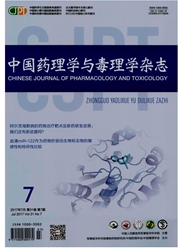

 中文摘要:
中文摘要:
大气PM_(2.5)污染已成为危害人群健康的重要环境问题之一,如何对其健康危害进行识别并采取有效措施进行预防是当前国内外研究的热点。我国大气PM_(2.5)污染水平较高,准确评价个体对大气PM_(2.5)的暴露水平是开展深入研究的基础。大气PM_(2.5)污染来源广,组成成分复杂,可通过多种生物学机制引起一系列短期和长期健康危害。目前,国内外采用的主要研究方法包括流行病学人群研究和毒理学研究。此外,大气PM_(2.5)健康危害的干预研究方兴未艾,是未来重要的研究方向之一。
 英文摘要:
英文摘要:
Ambient fine particulate (PM2.5) pollution has become one of the major environmental issues that endanger human health in China, and how to recognize and prevent its health hazards is one of current hot spots for scientific research. Ambient PM2.5 has maintained high levels over recent years, and accurate assessment of personal exposure to PM2.5 is the basis for in-depth investigation. Ambient PM2.5 contains various chemical constituents from multiple pollution sources, and can exert a series of short-term and long-term health hazards via a range of biological mechanisms. Epidemiological and toxicological studies are two major types of design used in the health hazards assessment of PM2.5 In addition, interventional studies on how to mitigate the adverse health effects of PM2.5 are emerging as a new important sphere for future scientific research.
 同期刊论文项目
同期刊论文项目
 同项目期刊论文
同项目期刊论文
 期刊信息
期刊信息
